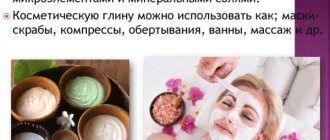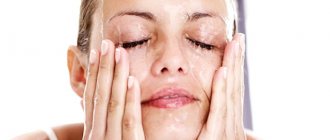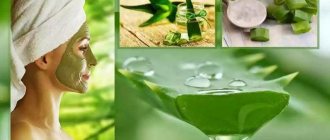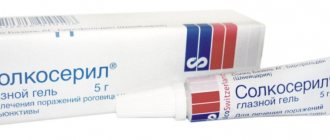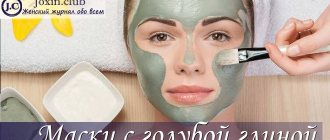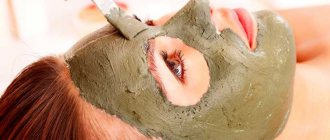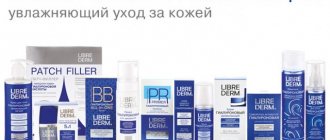Throughout the history of mankind, women have been pursuing beauty and healthy skin. Nowadays, some people resort to complex manipulations in a beauty salon, while others prefer to use inexpensive homemade cosmetics. Among such cosmetics, clay takes pride of place. This inexpensive natural resource is increasingly gaining popularity. You can’t mindlessly apply clay; it’s important to figure out if you have any contraindications.
What you will learn:
- The effects of clay on the skin
- Possible contraindications for use
- The effectiveness of masks - pros and cons
- Properties and quality of clay Can clay cure psoriasis?
Clay, due to its healing properties[1], has been widely used in skin care for a long time.
As studies show[2], the use of certain types of clay helps eliminate excess sebum, cleanse and refresh the skin, and also promotes the healing of pimples[3]. However, there are still several myths surrounding clay masks. We'll look at three of the most common mistakes and give tips on how to get the most out of your mask.
What to choose
Is it necessary to apply cream after the mask? Necessarily! But which one? This is where it is difficult to make a choice.
Before buying a suitable product, we recommend comparing them by composition online on a special website.
Even based on these tips, some cream may absolutely not suit one woman, while another may find it ideal. You shouldn’t base your decision on your friend’s advice; you are two different people with different skin textures. Study the compositions, experiment and only after that you will find exactly your face cream.
Mistake 1: Choosing a mask without taking into account your skin type
Clay is the basic term for different types of mineral compounds, and each type of clay has different properties. This means that there is a specific type of clay for a specific skin type and specific needs. White clay is a gentle micro-granular cleanser that removes excess sebum without drying out the skin (so great for sensitive and dry skin). Green clay has more powerful adsorption and absorption properties, making it more suitable for oily skin. Charcoal—actually pure carbon rather than clay—is known for its ability to cleanse the skin of impurities and toxins.[4]
What is the difference between the effects of a mask and a cream?
Creams and masks are fundamentally different products. If the former are intended for regular care, then the latter are for one-time intensive exposure. They complement each other perfectly, but if you use one product, this does not mean that you can forget about applying the other.
Photo: grumy.ru
Table of differences
| Criterion | Mask | Cream |
| Consistency | Thick. Partially absorbed | Easy. Absorbed entirely |
| Concentration of active substances | High | Low |
| Functions | Elimination of specific problems - pimples, acne, wrinkles, bruises, wide pores, other defects | Maintaining metabolism in epidermal tissues |
| Depth of influence | Below the basal layer, at the level of follicles and fibroblasts | At the basal level |
The cream is a basic care product, the mask is an additional care product. One cannot be a substitute for the other. Neither a mask nor a cream can become a substitute for a healthy lifestyle, proper nutrition and sleep.
Mistake 2: Keeping the clay mask on for more than 10 minutes
Clay face masks penetrate the skin, absorbing excess sebum (absorption) and drawing out and binding impurities (adsorption). This means that if you leave the mask on for too long, the clay can dry out your skin. Instead of waiting for the mask to dry completely on your face, leave it on for no more than 10 minutes, as recommended for use with the Pureté Thermale Pore Purifying Clay Mask. If your skin feels dry or tight after removing the mask, use Mineral 89 soothing mineralized water to instantly restore moisture balance.
Properties and quality of clay
On the Internet you can often find discussions about clay and its ability to clog pores. High-quality cosmetics with clay and cosmetic clay, on the contrary, remove oily shine, cleanse and tighten pores.
Low-quality cosmetics, purchased somewhere on the market or “on the market,” in 99% of cases clog pores and harm our skin.
An important feature of clay when used externally and internally is the absorption of toxins and saturation with minerals. But if this strong sorbent is used ineptly, vitamins will be drawn out along with skin “waste”.
Can clay cure psoriasis?
Fans of homemade cosmetics claim that blue clay is used to treat serious skin diseases. Such as psoriasis and eczema.
For such problems, it is better to consult a dermatologist.
You should not pay attention to the obviously overestimated ability of clay to treat the spine, its curvatures and joints, intestinal colic, ulcers and genitourinary diseases. Particularly impressive are the stories about miraculous cures for gynecological diseases and nervous system disorders using clay. It is better not to try such treatment.
Only a doctor can prescribe competent treatment for the above problems, but not an “amateur” of experiments.
Making homemade tonic
If you don’t have a ready-made tonic on hand, bought in a store, use a composition of medicinal herbs.
Recipe No. 1:
- dry raw chamomile or sage - 1 tbsp. l.;
- boiling water – 200 ml;
- alcohol – 100 ml.
Prepare an infusion of sage or chamomile at the rate of 1 tbsp. l. for 1 cup boiling water. Let stand for 60 minutes, cool, strain. Take two parts of the decoction, mix with 1 part of alcohol. This composition should be infused for 7 days in a cool, dark place and used for wiping.
Alcohol is a preservative. The lotion based on it can be stored as long as you like.
Recipe No. 2:
- calendula – 1 tbsp. l.;
- boiling water – 1 cup.
Prepare an infusion of calendula flowers at the rate of 1 tbsp. l. per glass of boiling water. Let stand for 60 minutes, cool, strain. The toner is ready for use. Use it to wipe your face, but store it in the refrigerator for no more than 1.5 days. Calendula is suitable for acne, pigmentation, and signs of aging.
Special composition of cosmetic clay
Despite the fact that the clay varies in color, the composition is practically the same. Here's what you can find:
- The most important substance is silicon oxide. It can restore injured blood vessels, improve collagen production and stimulate the regeneration process;
- Aluminum - dries out the skin (an excellent product for those with oily or combination skin types). Green, white and red clays contain the most of it;
- Manganese - it is thanks to it that clay works as an antiseptic;
- Magnesium - helps start the process of skin regeneration and rejuvenation;
- Copper - thanks to it, the production of keratin is stimulated, which is very important for rejuvenation and “glow”. It also protects the skin from the harmful effects of the environment;
- Zinc – protection against various harmful bacteria and cell rejuvenation;
- Other components - iron, phosphorus, nitrogen and others nourish the skin with important substances.
Unexpected diagnosis: frost allergy
How do people react to cold? Strange question, you say. They shudder, feel cold, may feel goosebumps and even tremble. But for some people, even warm clothes can't save them from red itchy rashes, blisters, and even fever and aching joints! This is what an allergy to cold looks like.
There are no exact statistics on frost allergies. It is known that it appears most often between the ages of 14 and 30, and about 70% of those suffering from it are women. The reaction occurs when the thermometer drops to +4°C and below. In humid air and strong winds, the manifestations are more acute, since the cold is felt more acutely.
I can't tell if the red rash that appears on my skin in winter is a frost allergy or a sign of another problem. Is it possible to determine accurately?
The most affected areas of the body are the nose, earlobes, face, hands. But rashes can also appear under clothing if the person is cold enough. The classic hives appear first—a red rash with swelling, blisters, and itching. Then it may be accompanied by white and pink rashes. If cooling continues, systemic reactions of the body may begin - chills, fever, headache. There is even an increase in temperature and aching in the joints. The most dangerous reaction is Quincke's edema. The eyelids, lips, mucous membranes of the mouth and respiratory tract swell. The throat begins to feel sore and cough, and breathing may be impaired.
Of course, all these symptoms can be associated with other reasons. To make sure that cold air is to blame, they do a “frost test.” Place a piece of ice on the back of your hand and hold it for 2-5 minutes. If some time after removal a swelling and rash appears in this area, this is a sign of an allergy. Some tests can effectively help distinguish frost allergies from other conditions.
I have never had an allergy to cold before. Blisters on the skin, which I scratch until it hurts, began to appear after I was 25 years old. What explains the appearance of these itchy spots?
Primary cold allergy occurs on its own; its causes have not been precisely established. There is evidence that within 10 years after the first attack, the reaction to cold disappears on its own in about 25% of people.
There is a so-called secondary allergy to cold, which occurs as a result of other diseases. For example, after a person, especially a child, has had chickenpox, pneumonia, or infectious mononucleosis. It also develops against the background of chronic diseases, especially immune disorders, diseases of the liver and gastrointestinal tract, and helminthiases.
Although medicine is not sure of the causes of primary cold allergies, the mechanism of the reaction is quite clear. Under the influence of cold - no matter from the air, water or from some surface - special immune compounds called cryoglobulins are intensively produced in the blood vessels of the skin. They give such a skin reaction.
On the one hand, the strategy for dealing with allergies to cold seems to be clear: dress warmly, spend less time in the cold, do not swim in cold water, etc. But sometimes circumstances are stronger than us, and going out into the cold and starting to suffocate from Quincke’s edema is not the best outcome. Plus, as already mentioned, a reaction to cold can be a manifestation of serious internal diseases. Finally, cold reaction can easily be confused with Raynaud's disease. In her case, a person reacts to cold in a similar way, but not due to the production of cryoglobulins, but due to paroxysmal spasms of small blood vessels. It leads to ulcers and tissue necrosis.
Therefore, it is better to consult an allergist, conduct a diagnosis and get recommendations for relieving the acute condition.
I'm going to see an allergist. What tests should be prepared in advance?
Indeed, to save time, you can conduct research on some blood parameters even before visiting a doctor and come to him with ready-made results.
You can choose either a biochemical liver test or a liver examination, since half of the tests are the same.
A basic biochemical blood test will allow you to assess the general condition of the liver and the risk of vascular atherosclerosis. Based on this, it will immediately become clear whether a primary allergy to frost can be assumed, or whether this reaction is clearly a consequence of some kind of disease. It is advisable to donate in the first half of the day; before blood collection, do not eat for 8-14 hours; you can only drink regular still water.
Liver examination, basic - a set of tests that allows you to assess the condition of liver cells and its functioning. It is usually prescribed for increased fatigue and the presence of heaviness or pain in the right hypochondrium. If there is a reaction to cold, it will allow you to determine whether the allergy is a consequence of toxic, viral or other liver damage. It is given in the same way as a biochemical blood test.
Cryoglobulins are a study that will detect the very immune complexes with which the body responds to frost. It is better to check them, since their presence in croquis is accompanied by kidney damage. They may also indicate viral hepatitis and some other diseases. The test is taken in the morning after an 8-hour fast; you can drink plain water without restrictions.
If there is a suspicion of Raynaud's syndrome, often associated with rheumatic diseases, it is necessary to undergo a rheumatological advanced set of laboratory tests.
Speed up your diagnosis and rule out serious illnesses by getting all your tests done in one go at a conveniently located laboratory office.
Serums for skin
These are products with a very high concentration of substances aimed at solving a specific problem. Due to the high concentration, just a few drops are enough to achieve the desired effect.
These products penetrate the deepest and are truly powerful in the fight against various cosmetic problems, such as acne, loss of skin elasticity, age spots or age-related changes.
Manufacturers often produce entire lines of cosmetics that solve specific problems for your skin. And in these lines, one product, for example a serum, enhances or complements the subsequent cream that solves the same problem.
In what order should I apply facial products?
Eye patches
Some of the best products that help you quickly get in shape when you have a date or an important meeting ahead, and your skin is not in the best condition. They perfectly tighten the skin of the eyelids, refresh the color and remove swelling under the eyes.
These are hydrogel or made from non-woven fabric overlays - masks under the eyes. The point of these products is in the highly effective compounds with which they are impregnated. Thanks to this, they can almost instantly remove puffiness and dark circles under the eyes, moisturize and smooth the skin under the eyes, giving them a fresh and rested look.
But, unfortunately, patches have a visible but short-term effect. Therefore, the use of patches does not exclude the use of eye cream. Most of the products you use in the previous stages cannot be applied to your eyelids. To do this, you need a special eye cream - effective, but delicate.
Cosmetic clay: sorted by color
As described above, clay varies greatly in color, slightly in properties and composition. There are several colors: white, blue, yellow, green, red and black. Let's start in order:
- White clay or kaolin: whitening and smoothing out unevenness. The most easily accessible and famous. White cosmetic clay will help with almost all skin problems: acne, flaking, redness, inflammation, and so on. It is easy to find in many formulations of skin and body care cosmetics. After using white cosmetic clay, sebum production is reduced, excess oily shine is removed, acne dries out and facial wrinkles are smoothed out. Moreover, kaolin can be used as a scrub or peel if you want to gently and gently remove dead skin cells;
- Blue clay: healing and drying. No less popular than white and is considered top due to the presence of many vitamins, minerals and microelements. Especially cadmium and cobalt. It is recommended for those with oily and combination skin types to use blue cosmetic clay for the face - acne and blackheads disappear over time. The complexion is refreshed, the skin becomes smooth, clean and radiant. A big bonus is the stimulation of blood circulation, which helps fight cellulite, stretch marks and inflammation;
- Yellow clay: freshness and tone. It contains sodium and sulfur, so it is perfect for dull and “sad” skin of the face or body - it’s a good oxygen shock. The effect is cumulative, but the first results will be visible after just a few uses - the skin will brighten, glow, look healthy and rested. If you have areas on your body with rough or dead skin (elbows, heels), you can apply yellow clay to them to soften, moisturize and exfoliate. It is also an excellent remedy for regulating foot sweating and eliminating unpleasant odor. You can make foot masks to exfoliate the skin on the heels, remove the stratum corneum and unpleasant odor;
- Green clay: relaxation and calm. The composition includes copper and iron oxide - hence the color. These components help stimulate blood circulation, which leads to a pleasant glow on the skin and gradual rejuvenation. Green cosmetic is recommended for use if you have dermatitis or oily skin (in the first case, be sure to consult your doctor!). It's great to take baths with green clay before bed - very relaxing and calming;
- Red clay: warming and healing. It has this color due to a lot of copper, potassium and iron oxide. The skin is very well saturated with oxygen, blood circulation improves. As a result, the elasticity and firmness of the skin increases. Red clay warms up the skin, so it is good to use red cosmetic clay in the cold season to avoid chapping and dehydration. For dry, sensitive or dehydrated skin, red clay is a real gift. Redness, itching, peeling and dryness disappear in a short period of time if masks are used regularly;
- Black clay: cleansing and protection. In its composition you can find magnesium, manganese, quartz, iron and many, many other benefits. Many of them perfectly cleanse the skin and remove dirt and toxins from it. In addition to them, the use of black cosmetic clay helps smooth cellulite and reduce fat. In many salons and beauty parlors, it is used as an anti-cellulite agent for body wraps, massages and other manipulations to reduce centimeters in girth in various places. In addition to all of the above, subcutaneous and intracellular metabolic processes are accelerated. As a result, the skin is not only nourished and moisturized, but also protected from the harmful effects of the environment.
